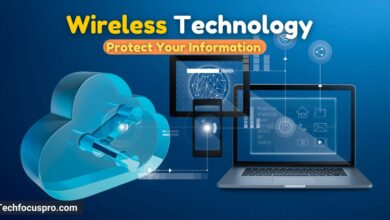Why is Anonymization a Challenge of Cybersecurity?

Introduction
Anonymization is like a superhero’s mask for our personal data, protecting our identity so no one knows who we really are when we’re online. Think of it as a magic trick that makes your personal stuff—like where you live or what you buy—disappear from the data companies have. This trick is vital to keeping our private lives private in a world where everything we do seems to get put online. But even though it sounds simple, making data anonymous is a big puzzle that’s hard to solve.
That’s why we will explore why is anonymization a challenge of cybersecurity and why it’s not always as easy as it seems.
The Essence of Anonymization in Data Privacy
Attaining the essence of anonymization in data privacy is similar to walking a tightrope, where the eventual goal is to transform sensitive personal data into a format where the identity of data subjects cannot be determined without forgoing the data’s utility. It serves as a severe shield, protecting individuals’ privacy while permitting more comprehensive social benefits from data analysis and research.
In cybersecurity, anonymization is more than just a technical process; it’s a fundamental principle that underpins the safe handling of personal info. It takes sophisticated techniques to strip data of identifying features while upholding its essence for genuine use. This delicate balance makes anonymization a linchpin in protecting privacy in an increasingly data-driven world, highlighting its significance as a technical challenge and a crucial ethical commitment to the stewardship of personal information.
Challenges Presented by Anonymization

Difficulty in Achieving Complete Anonymity
Trying to make sure no one can figure out who you are from the information you leave online is tough, almost like trying to hide and seek in a room that’s not very big. Just like people have unique ways of talking or writing, the info we all create and share online has special bits that can give away who we are, even if our names or addresses aren’t directly mentioned.
In the eyes of scientists studying it, it’s like trying to make a zebra lose its stripes while maintaining its identifiable fur. Despite our best efforts to blend in and conceal those stripes, someone aware of the signs they’re looking for may still see a zebra. This is because the more we use and share on the internet, the more clues we leave behind, making it hard to become completely invisible.
Balancing Anonymity with Data Utility
When discussing “Balancing Anonymity with Data Utility,” it’s like trying to have the best of both worlds where no one gets to know your secret identity but still enjoys your superhero powers. Imagine if you had a magic book that contained secret recipes that can make people healthier, but the catch is that if anyone finds out who wrote the book, it could lead to big problems.
You want to share the book with the world because it has many benefits, but you must ensure no one can trace it back to you. This is what companies and researchers go through with our data. They want to use this data to improve things for us, like improving apps, making cities more intelligent, or doing health research.
But they have to ensure that while using this super helpful information, they keep our identities safe and sound, so no one knows it was the data they used. It’s a tricky balance because the more you hide who it’s about, the harder it might be to use the information.
Simplifying Technical Challenges of Anonymization

Advanced Re-identification Techniques
Advanced re-identification techniques are like the digital world’s super sleuths, employing detective skills and smart guessing to piece together clues left in anonymized data. Imagine you have a giant jigsaw puzzle—you don’t have the picture that tells you what it’s supposed to look like in the end, but you start piecing together bits based on the shape and colors of each piece.
These techniques recreate the original image or, in this case, identify the person behind the anonymized data by utilizing patterns, information overlaps, and seemingly unrelated bits of data from several sources. It’s similar to how you could identify a friend in a crowd even if you can’t see their face by their gait or hairdo. These clever techniques locate such distinct ‘haircuts’ in the data, adding another layer of difficulty to the game of digital hide-and-seek.
Lack of Universal Standards for Anonymization
Imagine you’re playing a game where the rules change depending on where you’re playing. This happens with anonymization because everyone needs to follow one set of rules. Different places and companies have ideas of hiding personal details in the data. Just like some people might define ‘hiding’ in hide and seek as standing behind a tree while others think it means digging a tunnel underground, how we make data anonymous varies greatly.
This lack of universal standards makes it tricky because data considered anonymous in one place might need to be better elsewhere. It’s similar to trying to play a game when the rules are unclear and, hence, difficult to determine if you’re doing it correctly.
Legal and Ethical Considerations

Thinking about the rules and morals of anonymization is like navigating through a jungle gym—it’s complicated and requires careful movement. It comes down to following the playground rules, which vary depending on location. Laws protecting individuals’ privacy include regulations to prevent injuries in the jungle gym. These rules specify what businesses can do with personal information to avoid data misuse.
It’s important to act ethically even when no one is looking. To ensure that everyone feels comfortable and included in the game, it is essential to protect everyone’s privacy and ensure the data doesn’t harm anyone. Even if you could sneak around the rules, ethical considerations mean thinking about how your actions would make others feel and making choices that don’t put anyone at risk.
It’s not just about avoiding getting caught; it’s about genuinely wanting to protect people’s secrets and ensuring the information shared doesn’t backfire or cause unwanted consequences. Together, legal and ethical considerations act as the compass that guides us through the complex world of data anonymization, ensuring we keep people safe. At the same time, we explore and learn from the vast amounts of information available.
The Future of Anonymization in Cybersecurity

In the future, making data anonymous in the cybersecurity world will be like playing a super advanced version of hide and seek, where both the hiders and seekers are becoming more innovative and creative. It’s all about finding new and better ways to keep personal information safe from people who shouldn’t see it while allowing the good guys to use the data to improve things, like improving security or creating more innovative technology.
We will see more brilliant minds developing clever methods and tools to hide our digital footprints even more effectively. At the same time, we will create more intelligent systems to spot when someone is trying to sneak a peek at our private data. It’s like a game that never stops, where every move leads to another, pushing privacy protectors and data detectives up their game.
Conclusion
Wrapping everything up and making data anonymous is like being both a master magician and a super spy. We’re always trying to stay one step ahead, ensuring personal info is tucked away safely while letting the good stuff—the data we need to make extraordinary discoveries and innovations—shine through. It’s a challenging game, for sure.
We have to juggle many different things: tricky tech puzzles, sneaky detective work, and a maze of rules that change depending on where you are. Plus, we must keep our moral compass pointing in the right direction, ensuring we do right by people, even when it gets complicated.
Looking ahead, the chase is only going to get wilder. We’ll see more innovative ways to hide and seek data, with tech wizards and privacy pros working hard to keep our digital world valuable and safe. It’s all about striking that perfect balance and confirming we protect privacy without missing substantial chances to learn and grow from the info we share and gather.
Frequently Asked Questions
What is anonymity in cyber security?
Anonymity in cybersecurity is concealing an individual’s identity online to prevent personal information from being linked to their online actions. This is achieved through techniques and tools that mask personal data, like a digital veil, ensuring activities, communications, and data exchanges occur without revealing the user’s identity. This concept is foundational in protecting privacy, safeguarding freedom of expression, and securing sensitive information from unauthorized access or exploitation in the vast and interconnected digital landscape.
Why is anonymization important?
Anonymization is super important because it’s like having a magic shield that keeps your personal stuff safe online. Imagine if your name and address were attached every time you shared something online—that would be pretty scary, right? Anonymization helps keep your name and who you are a secret when doing things online, so you don’t have to worry about the wrong people finding out personal things about you. It’s like when you share secrets with your best friend and trust they won’t tell anyone else; anonymization does that for your information on the internet, so you can search, chat, and explore without stress. This secret-keeping is critical for ensuring everyone can speak freely, discover curious things, and be themselves online without fear.
Can AI and machine learning help in improving anonymization techniques?
Yes, AI and machine learning offer new possibilities for improving anonymization techniques. They can help by automatically identifying patterns humans might miss and simulating potential attacks on anonymized data sets to better secure them against de-anonymization efforts. However, using AI also raises new challenges in ensuring these automated processes do not inadvertently compromise data privacy.
Are there any foolproof methods for anonymizing data?
Currently, a method is only partially foolproof due to the rapidly advancing technologies in data analysis and the inventive strategies of cyber attackers. However, differential privacy and advanced encryption are constantly improving to offer robust anonymity guarantees.






